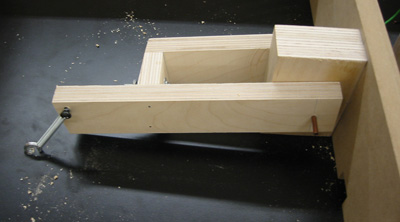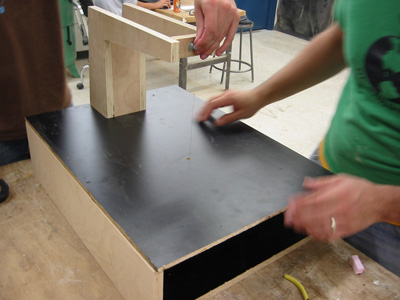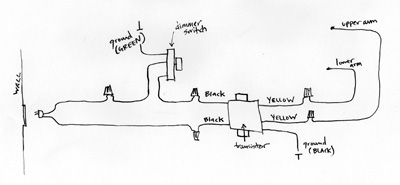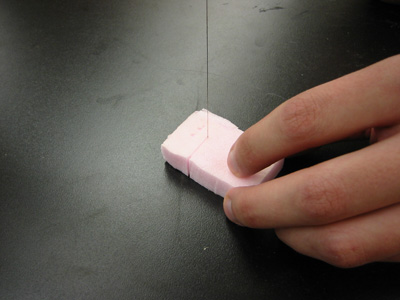
So you want a hotwire foam cutter but you can't shell out the $398.99 for one? No problem! We've got the lowdown and we're passing it onto you, lucky blog reader.
Here's your shopping list: assortment of bolts (1” to 3” length), turnbuckle eyelets, nichrome hobby wire, 120 volt to 12.6 volt, 3 amp transformer, dimmer switch (one way, not three way) and lamp chord wire with a plug.
Decide how large you want your base to be, and at what height you want your wire. The workable bed on this machine is 18” x 18” and the height of the wire is 10”. Mount the transistor near where you'll eventually place your dimmer switch and mount it so that it doesn't directly touch the wooden base, just to be careful.
For the tension on the wire to remain consistent, and to keep from constantly recalibrating the wire, attach a spring connection to the lower arm of the machine. A simple copper tube drilled through the bottom arm mechanism makes an easy pivot.
Attach the top arm so it is directly above the nut and bolt on the bottom arm. Attach the dimmer switch somewhere near the transistor (so wires don't have to fill up the base).

The nichrome wire will eventually get crimped and tightened onto the bolt. Connect one of the transistor's yellow wires to this bolt, at the washer. (see electrical diagram).
Elevate the bottom arm about an inch so that the wire has some give while you attach it, but then becomes taught when you remove the lift. Attach the wire to the bolt and tighten the bolt.
Thread the wire up through the bed of the machine and connect the other end to the top bolt mechanism on the upper arm.
The electrical plan is as follows:
The wire is extremely hot, as it is charged with nearly 120 volt of electricity, and it WILL burn you. Burning polystyrene is kinda bad for your lungs. While you're working wear a respirator, have a fan nearby and work in a well-ventilated area.

10 Comments
thats tight . . . nice work
well done...i've seen a few of these (homemade versions), yours is as good as the best.
Can you make gyros with that thing? I'm hungry.
As somebody who likes using foam cutters, if you're doing to DIY, I really suggest designing in the capacity to vary the height of the arm which holds the wire. The shorter the wire, the less it can flex out of plane.
Damn! Nice DIY project!
I miss school - that's tight though
can you touch the wire? Do you get a nice shock if you do??
wow!! a wire cutter in europe costs around 120 euros
the best ones are http://www.proxxon.com/
but excellent DIY proyect.
Good project, but not if it kills ya. What about safety precautions re: fumes? Specifically, what sort of masks/ventilation are required to use the cutter?
What a great thing - awesome fun. Just had one point, since the transformer is dropping the voltage, the wire is charged with 12volts, not 120 as you say. regardless - HOT is right! Also - you say "transistor" several times, when I think you mean "transformer".
Why the dimmer switch? in case the wire is too hot?
what sort of wood did you use
Block this user
Are you sure you want to block this user and hide all related comments throughout the site?
Archinect
This is your first comment on Archinect. Your comment will be visible once approved.